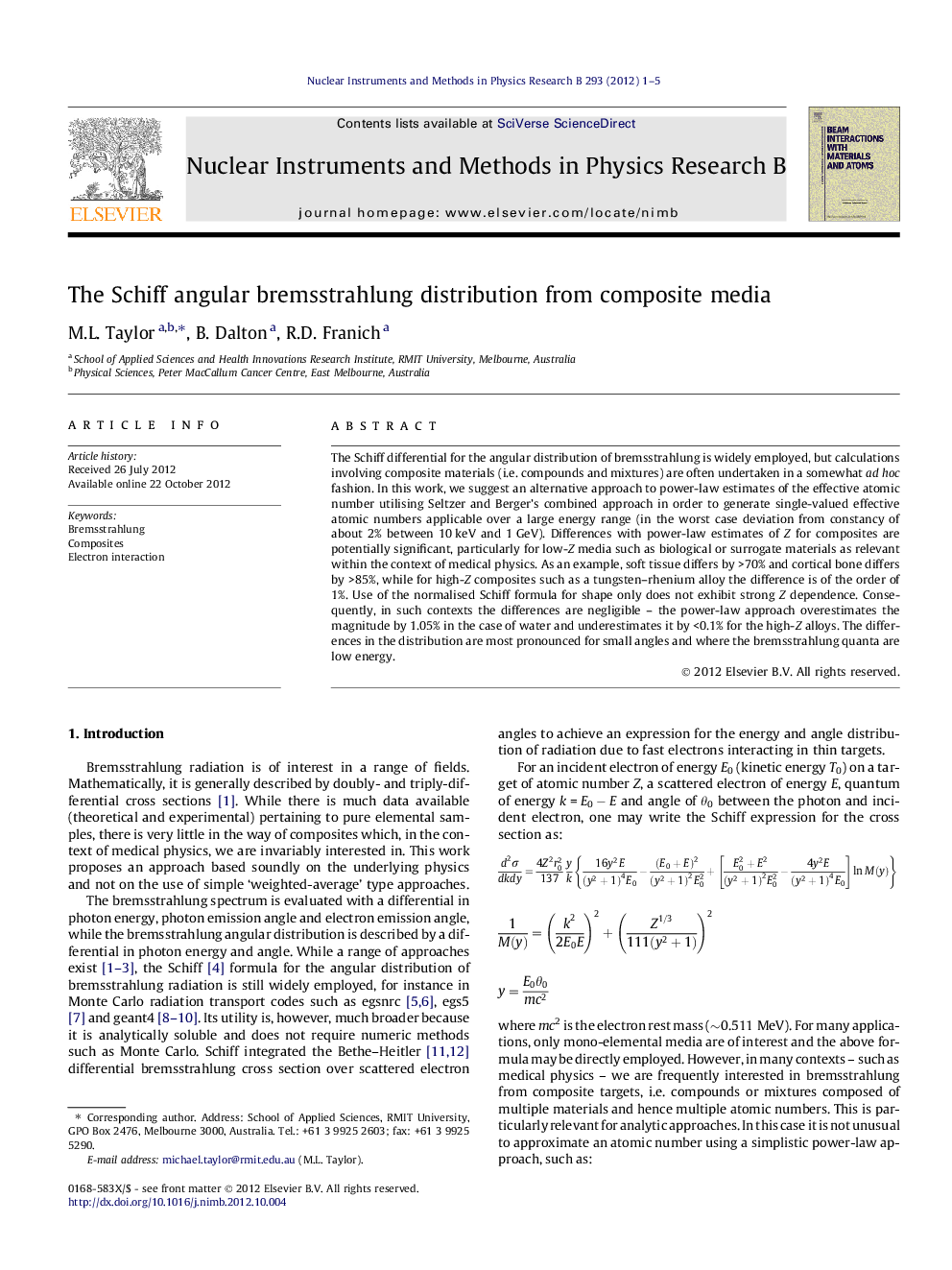| Article ID | Journal | Published Year | Pages | File Type |
|---|---|---|---|---|
| 1684705 | Nuclear Instruments and Methods in Physics Research Section B: Beam Interactions with Materials and Atoms | 2012 | 5 Pages |
The Schiff differential for the angular distribution of bremsstrahlung is widely employed, but calculations involving composite materials (i.e. compounds and mixtures) are often undertaken in a somewhat ad hoc fashion. In this work, we suggest an alternative approach to power-law estimates of the effective atomic number utilising Seltzer and Berger’s combined approach in order to generate single-valued effective atomic numbers applicable over a large energy range (in the worst case deviation from constancy of about 2% between 10 keV and 1 GeV). Differences with power-law estimates of Z for composites are potentially significant, particularly for low-Z media such as biological or surrogate materials as relevant within the context of medical physics. As an example, soft tissue differs by >70% and cortical bone differs by >85%, while for high-Z composites such as a tungsten–rhenium alloy the difference is of the order of 1%. Use of the normalised Schiff formula for shape only does not exhibit strong Z dependence. Consequently, in such contexts the differences are negligible – the power-law approach overestimates the magnitude by 1.05% in the case of water and underestimates it by <0.1% for the high-Z alloys. The differences in the distribution are most pronounced for small angles and where the bremsstrahlung quanta are low energy.
